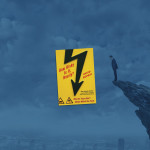Russia is Forging a New World Order as Russia Intimidates the West
Relations between the U.S. and Russia have reached a new low as Vladimir Putin signs a document adding the United States to a public list of threats to Russia’s national security.
For the first time since the fall of the Soviet Union, the Kremlin’s new security document names the United States, a NATO ally, as a threat. The new document signed into effect on New Year’s Eve, replaces a version from 2009 which was signed by then-president Dmitri Medvedev.
In a somewhat disjointed translation obtained by Reuter’s, the document, titled “About the Strategy of National Security of Russian Federation,” says Russia’s policies at home and abroad have caused “counteraction from the USA and its allies, which are striving to retain their dominance in global affairs.” This will undoubtedly put “political, economical, military and informational pressure” on Russia. The document also places blame on the U.S. and European Union for the conflict in Ukraine.
According to the document, the goal of Russia’s new strategy is “consolidating the Russian Federation’s status as one of the leading world powers, whose actions are aimed at ensuring strategic stability and mutually beneficial partnerships in the context of a multi-polar world.”
What impact will this have on global affairs?
- The standoff between Russia and the West, which was sparked by Russia’s actions in the Ukraine will endure, as will the sanctions slapped on Russia for their aggression. Moscow remains unwilling to relinquish access to and control of the border between Russia and the separatist territories and allow monitors from the Organization for Security and Co-operation in Europe into the contentious territory.
- According to a Moscow Times report last May, “Russia is expanding strategic bomber flights around the globe in a bid to intimidate other nations and assert its geopolitical influence.” After the downing of the Russian fighter jet in Turkish airspace in November, it will be interesting to see how much further Russia will test their military might against their supposed NATO allies*. But as tensions between Russia and the West have increased, Russian bombers forced NATO to scramble jets to intercept Russian military aircraft over 400 times last year according to Secretary General Jens Stoltenberg.
- Russia will continue their military support of the Assad regime in Syria, which targets Sunni rebels. Their Shiite alliance spreads to Iran and further positions Russia as an opposing force in the Middle East as the U.S. reaffirms allegiance with Sunni lead Saudi Arabia.
- A powerful new alliance between Russia and China was signaled in May of 2015 when the two nations held their first war games. The live fire exercises occurred in the Mediterranean Sea (of which neither China or Russia have any coastline) demonstrating their might in the very backyard of Western Europe. “People who call this an axis of convenience … are missing the bigger picture,” said Gilbert Rozman, a Princeton University professor of Northeast Asian affairs. “This is a relationship about national identity and the big efforts in both countries to establish a different kind of international order.”
The world is changing before our eyes. And it is particularly worrisome as the forces coalescing around a new world order are the very nations who are most aggressive, most oppressive, most corrupt….. But Vladimir Putin has been telegraphing his moves for years now, underscored by his now famous quote, “The breakup of the Soviet Union was the greatest geopolitical tragedy of the 20th century.”
*A London-based think-tank, European Leadership Network (ELN) examined 39 incidents of military encounters between Russian planes and boats and NATO forces and allies and concluded that the “highly disturbing” violations have caused several incidents where military confrontation or the loss of life was narrowly avoided. The report listed near-misses including violations of national airspace, emergency scrambles, narrowly avoided mid-air collisions, close encounters at sea and simulated bombing attacks stretching from the North Sea to the Baltic and Arctic regions along the US coast. The authors of the report expressed concern that this continued aggressive behavior will lead to an unintended conflict.




